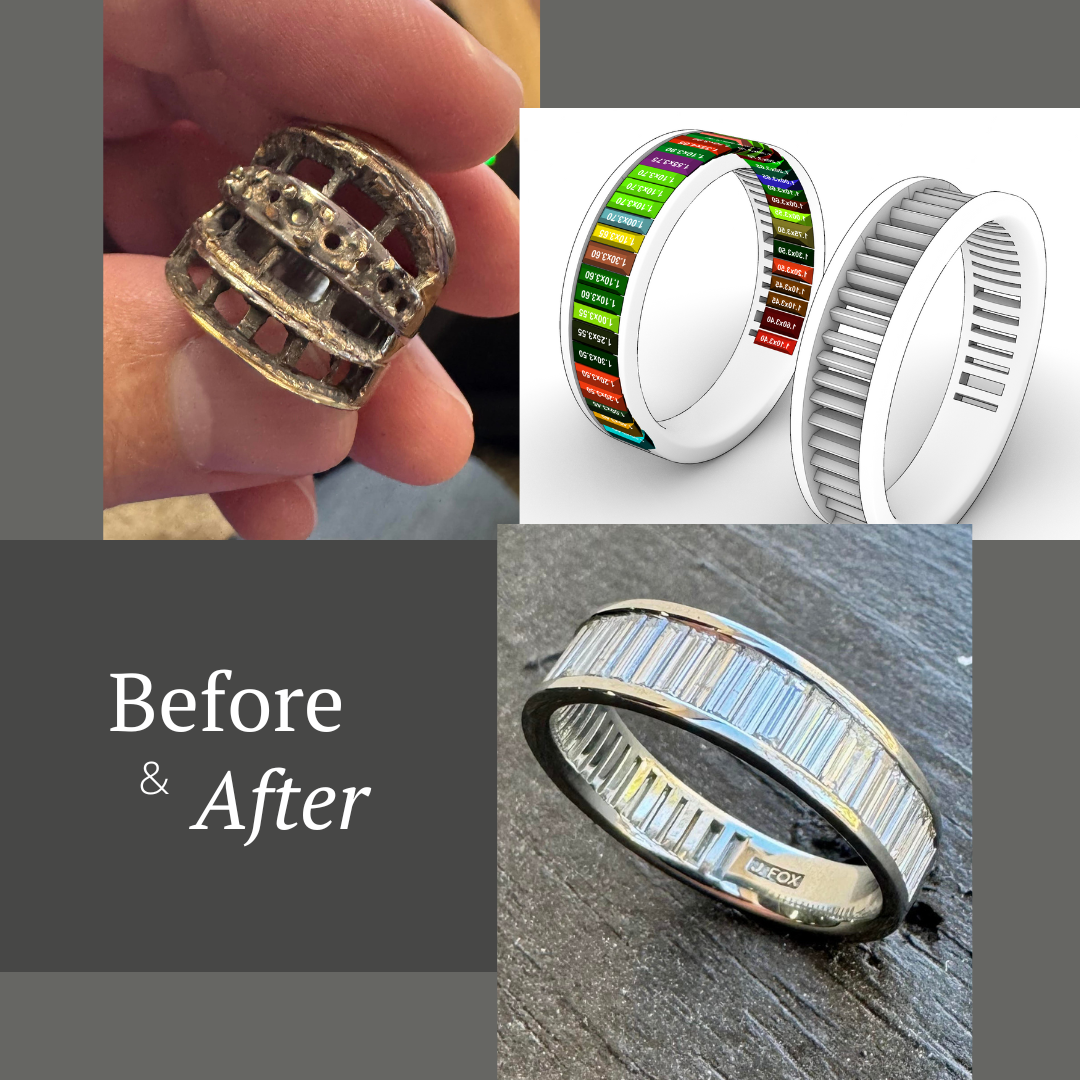
No Shortcuts
Jake FoxShare
How Not To Build A Ring
This is the condition our client's ring was in when she brought it to us.

As soon as we got the diamonds unset, we were able to see several issues. Most glaringly, there were only eleven supports holing all of the baguettes in place. To make matters worse, these supports were not at all uniform, and had been left completely unpolished.
This makes setting easier, especially with varying stone sizes, and it may save a few dollars on metal weight - but let’s be blunt: The reason to build a ring like this is that the jeweler didn't want to take the time to build it correctly.
We don't believe in taking shortcuts.
- We meticulously measured each baguette. That's length, width at either end, and depth. We then sorted out the tapered baguettes, and a few other outliers for use in a future project.
- These baguettes were far from calibrated. In fact, what we were left with was exactly 44 different sizes. Instead of trying to mask size variations, we arranged the gems in a subtle taper for a more refined, and comfortable fit.
- We created a precise, color-coded map to ensure every stone was placed with intention.
- Each diamond received its own custom-cut, polished support bar - crafted to its exact dimensions. These aren't just generic rectangles of metal, they're actually chamfered to fit the pavilions of the diamonds.
Why does this matter?
You may be thinking this is just an exercise in perfectionism. We certainly take pride in our work, and yeah, there may be a little of that... But there are also several very important benefits to building this ring correctly.
- Even pressure distribution prevents chipping and breakage. Some of the baguettes had already taken a little damage, but this will reduce future issues greatly.
- A secure structure minimizes the risk of stones loosening over time. Those big open areas in the original ring can actually allow the stones to shift, and wiggle. As this happens, the diamond will groove the metal, and can eventually work its way out of the mounting altogether.
- Simplified future repairs - individual settings allow work on one stone without affecting the entire row, making maintenance easier and more cost-effective.
- Less buildup over time - dirt and residue don’t cling to polished surfaces, keeping the ring cleaner and brighter for longer.
- Polished settings reflect more light, maximizing brilliance! By properly finishing each surface on the inside of the support bars, we create dozens of little mirrors to help send light back to the viewer. Because of this, the diamonds will actually look whiter and brighter overall.

In fact, we could probably have done this ring the same way it was done before, spent half as much time, charged just as much money, and called it a day - but that's not how we do things.
We believe in making our jewelry properly, the way we would want it made if we were the ones wearing it. The average customer may not always understand why we do things the way we do, but that's not an invitation to cut corners or try to "get away" with doing a job the easy way.
When we say "don't settle for less than the best", this is what we're talking about.
Experience the difference with J. Fox Custom Fine Jewelry!
Experience the difference with J. Fox Custom Fine Jewelry!

